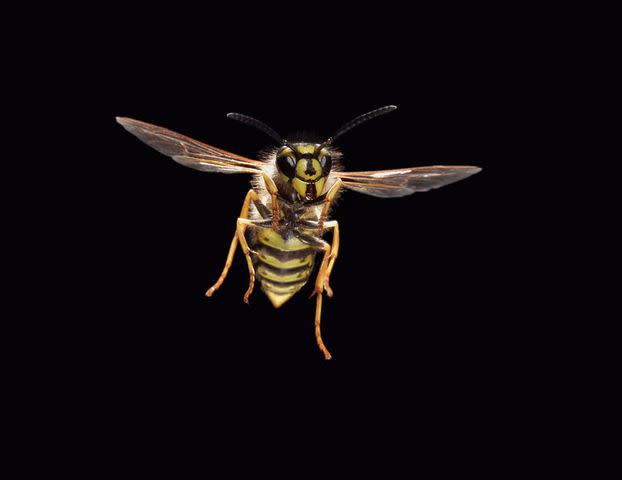Chelsea Handler's Eye Swells Shut from Wasp That Bit Her 'While I Was Minding My Own Business'
The comic shared a photo of red, painful-looking welts on her face from a wasp that attacked her in her bedroom

Chelsea Handler/Instagram
Chelsea HandlerChelsea Handler’s summer ended on a painful note, as the comic shared that she was bitten by a wasp — on her face.
Handler, 48, posted a photo of the bite to her Instagram stories on Wednesday, first showing the unblemished side of her face — and then switching to “the other side” for comparison.
The corner of Handler’s eye had several large, blotchy red welts that extended to her hairline and down her cheek.
Handler says she didn’t provoke the wasp, and poked fun at the wasp’s attack in a caption on an unrelated photo of herself at dinner.
“Just sitting here with one eye shut from a wasp bite,” the caption read, “while I was minding my own business, in my own bedroom, in my own house, and then decided enough was enough.”

Getty
Wasps can sting multiple times.Never miss a story — sign up for PEOPLE's free daily newsletter to stay up-to-date on the best of what PEOPLE has to offer, from juicy celebrity news to compelling human interest stories.
Although the Los Angeles resident said she was bitten by a wasp, stings are more common — and unlike bees, which can only sting once as they lose their stinger, “wasps can repeatedly sting, making them dangerous, especially in people who are sensitive or allergic to the venom,” according to Verywell Health.
Related: Chris Pratt Reveals Painful Bee Sting on His Left Eye: 'False Sense of Security'
If you are stung, the CDC says the best course of action is to avoid antagonizing the wasp. “Remain calm and still if a single stinging insect is flying around. (Swatting at an insect may cause it to sting.)”
While bees and some species of wasps only attack humans if they feel threatened, wasps can attack unprovoked — and tend to be more aggressive as fall approaches.
“When the weather turns colder, food sources disappear and they begin to starve. Starvation makes them angry and aggressive as they work hard to seek food,” beekeeper Scott Famous told The Washington Post.
“Yellow jacket colonies grow largest in late summer and early fall just when their food sources begin to diminish, providing plenty of frustrated, hungry wasps.”
Related: Chelsea Handler Bartends During Bruce Springsteen's London Concert: 'What a Ducking Show'
The wasp that stung Handler will be gone soon enough, though, Famous notes.
While yellow jackets can stay more active in colder months — which is why we see them well into the fall — “ultimately, all of the yellow jackets die at the end of fall except for a new queen, which remains underground during winter.
For more People news, make sure to sign up for our newsletter!
Read the original article on People.

